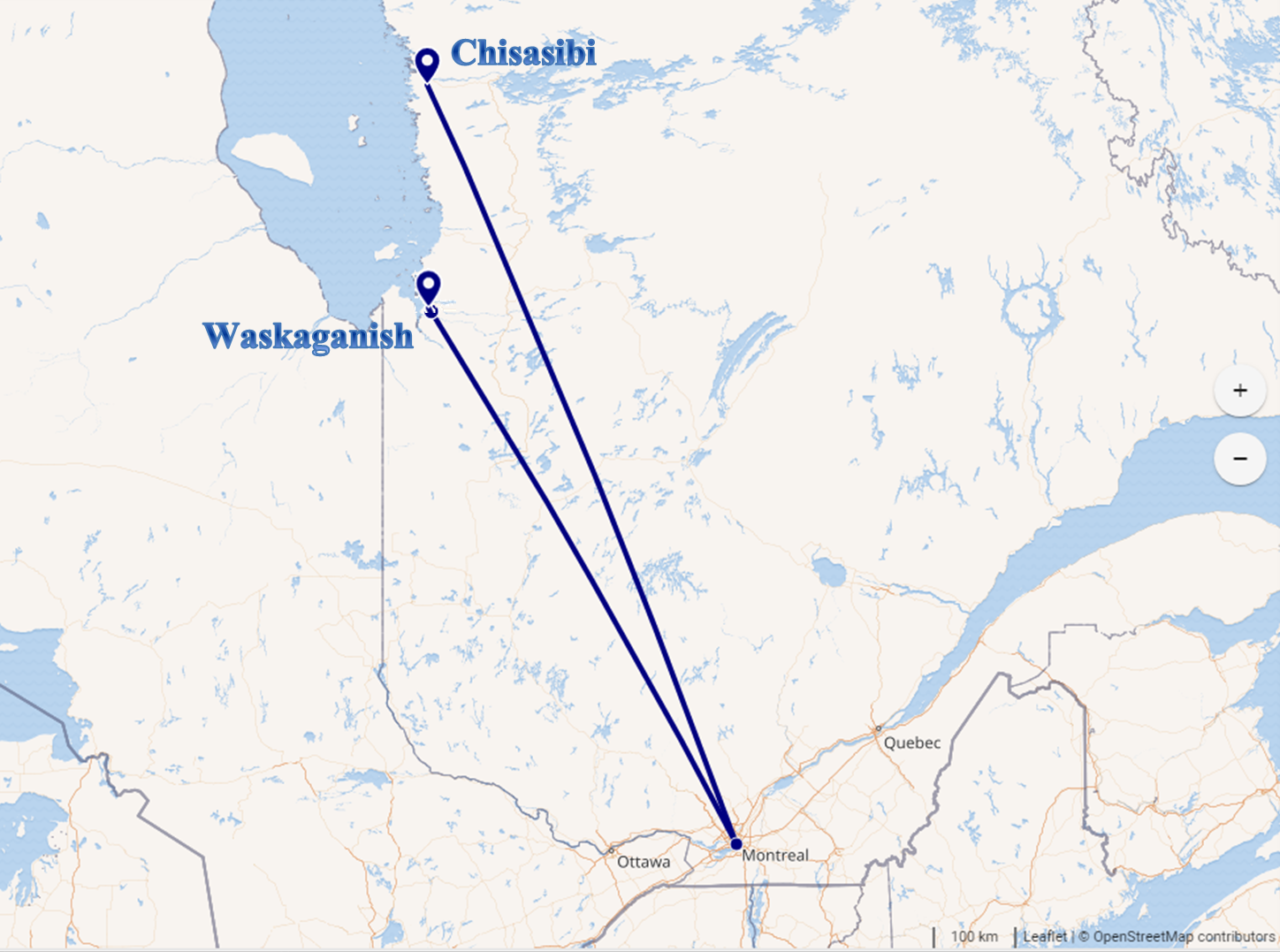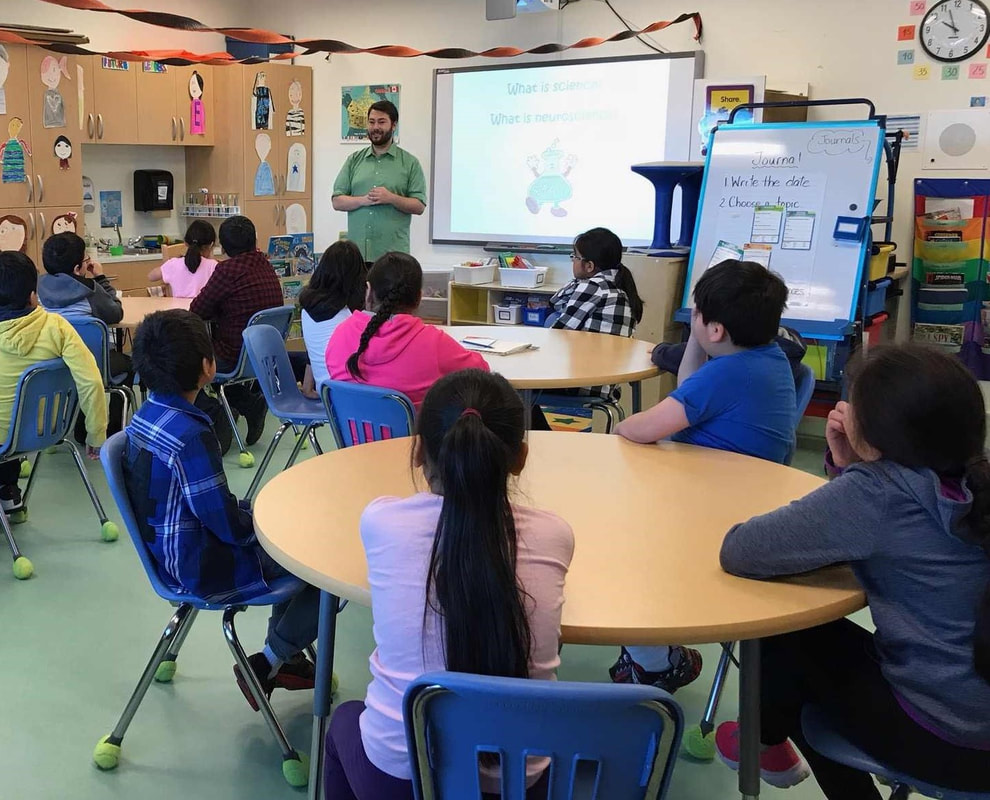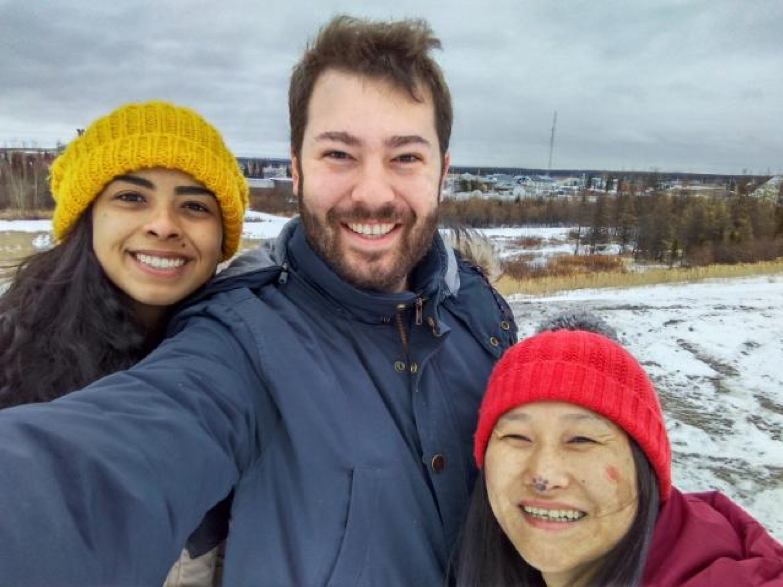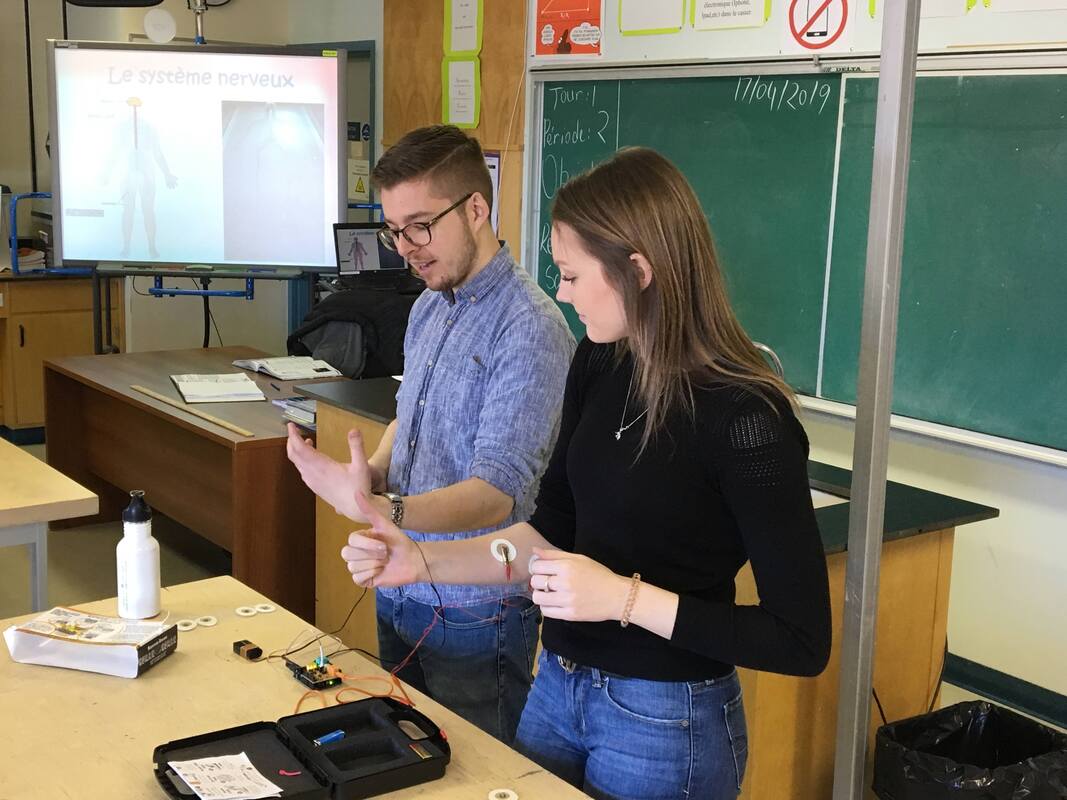
Authors: Ana Elisa Sousa, John Aspler, Sébastien Belliveau and Megan McGill
Editors: Stephanie Scala and Li-Yuan Chen

In October 2018 and April 2019, BrainReach North, a science outreach organization for northern Indigenous communities run by McGill University graduate students in Neuroscience, sent volunteers to Chisasibi and Waskaganish, two Cree communities in the Eeyou Istchee territory in Northern Quebec. The objective of the student volunteers is to motivate kids to learn about science and the natural world as well as inspire them to employ a problem-solving approach in their daily lives.
The October 2018 trip to Chisasibi took place over three days.. During their stay, BrainReach North volunteers taught approximately 200 students at Waapinichikush Elementary School. Lessons given to students in grades 3 to 6 focused on a variety of topics, including:Why do animals have different brain shapes and sizes?; How do our brains trick us into seeing things that are not there?; and, How does our attention work?
Almost immediately after landing in Chisasibi, the volunteer PhD students from the Integrated Program in Neuroscience (IPN) John Aspler (since graduate) and Ana Elisa Sousa were whisked away to Waapinichikush Elementary School by Headteacher Sonam Dekhang, , to start their first lessons. Sonam played an integral role in helping BrainReach North organize this trip and acted as John and Ana’s guide during their visit.
In Chisasibi, children study in Cree until Grade 3 when classes are conducted in either French or English. John taught classes in French, while Ana taught students in English

classrooms. They also met with teachers to show them new BrainReach North educational resources.
After the lessons, the volunteers had a chance to see the town, including the stunning bay at sunset and the Great River (from which Chisasibi gets its name), and spent some time in a mitchuap (a traditional shelter). They also visited the Chisasibi Heritage and Cultural Centre to learn about the town’s history. Chisasibi, as it exists today, was built in the early 1980s. After hydroelectric dams were constructed in the area, the old location of the town began to dwindle.
The last day of John and Ana’s visit was Halloween, which allowed them to see the amazing decorations that the students had made. Students were also dressed in creative costumes and had a pumpkin decorating contest to show off their creativity.
***************************************************************************************************************************

In April 2019, two other BrainReach North volunteers, then IPN Master’s students Megan McGill and Sébastien Belliveau travelled to Waskaganish. While this was Sébastien’s second outreach trip, it was Megan’s first.
Shaun McMahon, the principal who generously provided accommodations during Sébastien’s trip to Kuujjuarapik last year, was now at Waskaganish. Given the positive experience collaborating the previous spring, Shaun was eagerly on-board and instrumental in ensuring this trip to Waskaganish was a success. Alex Allard-Gray, a representative of BrainReach North’s collaboration with McGill’s Indigenous Health Professions Program (IHPP), also joined Sébastien and Megan on this trip.
Once the trio landed in Waskaganish, they were picked up by the school’s caretaker, Jimmy Jacob. After meeting with the school’s teachers, the volunteers were treated to some traditional soup and bannock before jumping into a packed schedule of teaching students.
Over the next two days, Alex presented information about the IHPP, while the BrainReach North volunteers taught neuroscience content to students ranging in grades from 7 to 11. Each lesson started with Alex greeting the students in his traditional language, Mi’kmaq. Given this language shares an Algonquian root with Cree, the students enjoyed trying to decipher what he was saying!
Sébastien followed with a general introduction to science, the brain, and how the nervous system functions. The latter was exemplified by using Backyard Brains’ human-to-human interface, permitting Megan (and perhaps overly eager students) to shock Sébastien’s muscles into action. He then spoke about how the brains of different animals have different properties, encouraging students to explain their reasoning as they tried to match pictures of different animal brains to specific animals.
Megan then presented a lesson about the gross neuroanatomy of the brain, including its various lobes and their functions, and how these integrate to permit us to think, perceive the world, and interact with it. Throughout the lessons, the team encouraged students to ask questions to help them engage with the scientific process. Lessons also included activities, such as demonstrating knee-jerk reflexes, brain slices prepared for viewing under microscopes, and Alex’s healthcare Jeopardy game.
On their last day, Sébastien and Megan went on a tour of Waskaganish offered by one of the local teachers, Henry Wischee. During this tour, they had the chance to see the facilities of the community, as well as the Rupert river rapids, which offered a beautiful view. For Megan, this outreach trip allowed her to feel immersed in the lives of the community members, seeing where they lived, played, learned, and embracing their cultural traditions.
It was a pleasure to meet so many curious students and dedicated teachers during our trips. We would like to thank all the teachers, students, and staff at many levels who facilitated our trips and enriched our experience in both schools and to say a special thank you to the Waapinichikush Elementary School Principal and Vice-Principal, Headteacher Sonam Dekhang, and Waskaganish School Principal Shaun McMahon.
We thank Alex Allard-Gray and the Indigenous Health Professions Program at McGill for their partnership during the Waskaganish trip; we look forward to more collaborations in the future. We would also like to thank the Integrated Program in Neuroscience for their financial support on this trip. Finally, we also express our sincerest gratitude to Malosree Maitra and Ana, the co-presidents of BrainReach North, as well as the rest of the administrative team for coordinating both trips and to our volunteers for embracing the project!
BrainReach North hopes to keep returning to the North in the future – to deepen our ties to its peoples, to motivate students to learn about science, and to appreciate the stunning nature found in Northern Quebec.
Links to trip blogs:
Chisasibi: https://www.brainreachnorth.ca/brainreach-north-blog/june-03rd-2019
Waskaganish: https://www.brainreachnorth.ca/brainreach-north-blog/mcgill-visits-waskaganish
October 10, 2019
